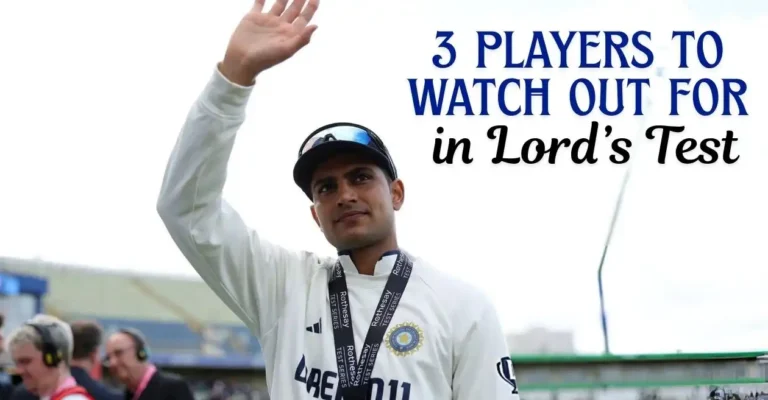

The iconic Lord’s Cricket Ground is all set to host the third Test of the five-match series between England and India, starting July 10. With the series evenly poised at 1-1, both teams will be eager to grab the lead at the ‘Home of Cricket’.
The first two Tests produced thrilling contests. England stunned India in the opener with a remarkable run chase of 371, showcasing their fearless Bazball approach. But India hit back strongly in the second Test, dismantling the English lineup and sealing a dominant 336-run victory. Now, with momentum shifting and conditions at Lord’s offering a different kind of challenge, fans can expect an enthralling battle.
India will be bolstered by the return of pace spearhead Jasprit Bumrah, who was rested for the second Test. His inclusion adds firepower to an already potent bowling unit. England, meanwhile, are expected to bring in Jofra Archer and Gus Atkinson to freshen up their pace attack, which lacked bite in the previous match. The duo’s inclusion could be crucial, especially with the Lord’s surface offering early seam and swing.
With two world-class sides hungry for the lead and some big names returning to action, the Lord’s Test promises to be a classic.
Lord’s Pitch Report: Green top promises challenge and opportunity
The pitch at Lord’s Cricket Ground is already the centre of attention ahead of the second Test, with the initial visuals showing a well-watered, green surface likely to offer far more assistance to bowlers than the strips seen at Edgbaston and Headingley. With two days still to go before the match, the grass appears thick and lively—though it may be trimmed slightly on the eve of the game, the surface is expected to retain enough juice to test batters throughout.
Historically, the pitch at Lord’s tends to produce relatively modest first and second innings totals, reinforcing its reputation as a bowler-friendly venue, especially early on. Seamers, in particular, have enjoyed fruitful outings here, thanks to the combination of the grass cover and the unique topography of the ground.
Slope adds complexity to both ends
Perhaps the most iconic feature of Lord’s is the eight-foot slope that runs diagonally across the field—from the Pavilion End down to the Nursery End. Though it may seem subtle to the naked eye, the slope has a significant impact on how the ball behaves, especially during the first couple of days when there’s enough in the pitch to aid movement.
Batting against the slope presents two different sets of challenges: from the Pavilion End, right-handed batters often face deliveries that move away more than usual, while the Nursery End tends to produce sharp movement into the right-hander. Adjusting to these nuances is key, and many experienced batters have been known to slightly alter their stance and guard depending on the end they are facing.
Also READ: ENG vs IND: Here’s how India have fared in Test matches at Lord’s, London
Adjustment the key for batters
While the slope and grassy conditions may present early trouble, Lord’s also rewards batters who can adapt and remain patient. Those who manage to stay compact and play late are often able to ride out the tough initial periods and cash in later, as the outfield is quick and scoring becomes easier once the ball softens.
Cricketers who’ve thrived at Lord’s have spoken about making subtle but significant adjustments, such as shifting their guard or staying a touch deeper in the crease, to counter the swing and seam on offer. Despite the assistance to bowlers, runs are very much on the table—provided batters are willing to grind it out.
Toss factor at Lord’s: A tough call for captains
Winning the toss at Lord’s has never guaranteed success, with historical data showing a fairly even split between teams opting to bat or bowl first. Out of 148 Test matches played at the iconic venue, teams batting first have won 53 times, while sides choosing to bowl first have emerged victorious on 44 occasions.
This near-balance highlights how conditions at Lord’s tend to evolve across the five days. The green pitch and early swing often tempt captains to bowl first, especially under cloudy skies. However, the slope, drying surface, and potential for batting to get easier later in the day make batting first an equally viable choice.
Ultimately, the toss at Lord’s is more about reading the conditions on the day than following past trends, with both decisions having nearly equal risks and rewards.
Also READ: ENG vs IND: Here’s how England have fared in Test matches at Lord’s, London
Source link




